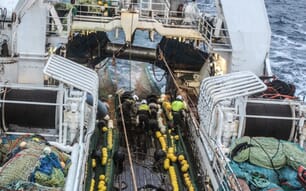The findings indicate that oil spills at high latitudes could have serious impacts on some of the world's most important fisheries, including those for haddock, cod and pollock.
The research published in Scientific Reports by a team of scientists from Norway and NOAA Fisheries' Northwest Fisheries Science Center in Seattle, US, show that crude oil compounds disrupt the development of key organs in embryonic fish.
The international collaboration will provide information to inform environmental risk assessments of proposed oil drilling in northern oceans.
Earlier research showed that the polycyclic aromatic hydrocarbons (PAHs) in crude oil interfere with heart development in fish, causing defects that compromise their later survival. The new research indicates crude oil also leads to extreme craniofacial deformities in embryonic haddock.
The earlier the exposure, the more severe the deformities.
Atlantic haddock are especially vulnerable because dispersed crude oil droplets attach to their eggs as they float in the ocean, the study found.
Only 24 hours of exposure to low concentrations of dispersed oil led to certain head and facial deformities in haddock so distinctive and striking that scientists referred to them as "bulldog," "jaw breaker," "Darth Vader" and "hunchback."
"The dispersed droplets of crude oil act like a kind of toxic time-release capsule that binds to the eggshells and leads to these extreme abnormalities," said John Incardona, a research toxicologist at NOAA's Northwest Fisheries Science Center.
"That creates a unique and newly recognized pathway for crude oil to interfere in the reproduction and survival of these fish."




